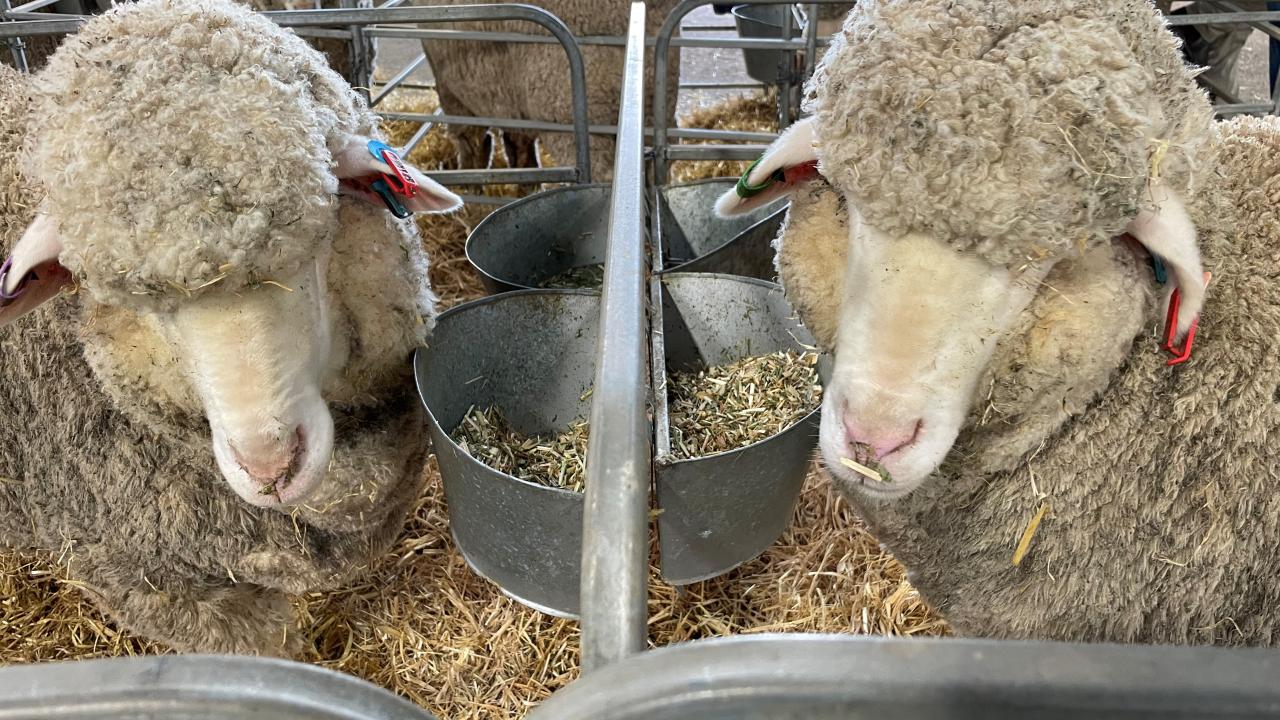Wool prices uninspiring amidst international market uncertainty

WOOL prices remain stubbornly subdued as the market struggles with sluggish demand.
Selling got under way again this week after a three-week recess, but unfortunately the usual post break price surge did not eventuate.
Nutrien state wool manager George Nichols said prices this week were mixed.
“There are two conflicting reports, if you look at the straight paper report there was a little bit of ground lost and a few red numbers,” he said.
“Talking to the guys on the floor and the bloke on the trade in Melbourne though, it was probably firm, so not a lift and not drop. There was demand there and people have to fill orders but it certainly wasn’t the lift we would traditionally see from that recess.”
Mr Nichols said the biggest challenge was uncertainty in international markets, which is being impacted by economic challenges in a lot of countries and ongoing conflict.
“We haven’t seen any improvement in international markets in terms of resilience or ability to pay,” he said.
“It’s continuing through and until we get some positive economics stories, where the wool market operates like the US, the Chinese and Europe and until we see a positive outcome, it’s hard to predict a lift in the short to medium term,” he said.
Mr Nichols said while there is still solid demand for good quality wool in some microns, overall the market is in a holding pattern. Going forward, he said a forecast drop in supply could hopefully see some improvement.
“There’s uncertainty about supply in the country, we’ve seen reports of a 10 per cent drop in supply over the next 12 months,” he said.
“There’s talk of that. They’re well established supply chain in the wool industry and that fall in supply will hopefully generate a better return for the growers that are sticking with it, especially for the better quality stuff.”
Mr Nichols said while the market is challenging, long term he said the fundamentals of the wool industry remain solid, especially when it comes to sustainability.
“The real positives in the wool industry at the moment are around some of the traceability and sustainability programs the industry is developing,” he said. “
Those sort of programs and things like the environmental properties and the quality are what we’re going to trade on in the future.”
In its latest wool market update, Rural Bank said the wool markets entered the three-week mid-year recess on a positive note. Prior to the break, the Eastern Market Indicator rose 17 cents, the second highest weekly gain for the year-to-date.
This gain was helped by the Australian dollar falling across the week.
However, this represented only a partial recovery following a 63 cent decline over the preceding five weeks.
At 1,124c/kg, the EMI sat 4.7 per cent lower year-on-year and trailed the five-year average by 12.8 per cent.
Across the microns, the bank says fine wools have seen the largest decline in the past year.
In the South region, 18-micron wool was 7.9 per cent lower yearon-year.
A slightly smaller decline of 6.7 per cent was seen in 20-micron wool. However, 20-micron wool is sitting much closer to average at 5.8 per cent behind its five-year average. In contrast, 18-micron wool is 16.5 per cent below its five-year average.
Crossbred wool saw some gains across the past year with 28-micron wool up 18.5 per cent year-on-year.
However, at 385c/kg it is still languishing 21.5 per cent below the five-year average.
Rural Banks said the different year-on-year movements largely reflect supply trends.
Fine wools have seen the largest increase in production in the past 12 months while medium and crossbred wools have seen more stable production. Supply is set to remain below levels seen in the 2023-2024 season.
Increased sheep turn-off in the past 12 months will mean fewer sheep shorn in 2024-2025.
In addition the banks said dry conditions affecting major sheep regions in 2024 could also see lighter wool cuts.
As a result, wool production is expected to decline further following a 3.8 per cent fall in the 2023-2024 season.
The banks said economic challenges for consumers in key markets of China, Europe and the US are yet to show signs of easing.

Add new comment